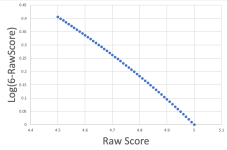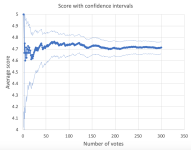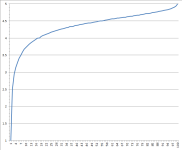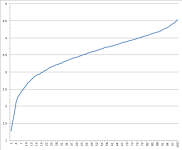joy_of_cooking
Literotica Guru
- Joined
- Aug 3, 2019
- Posts
- 920
I was thinking about plotting story ratings and realized that I'd probably want a nonlinear scale. People care much more about the difference between 4.4 and 4.5 than they do about 1 vs 2. By the time you get into the rarefied 4.9s, people probably care about hundredths. (I assume. It's not as if I have any stories there.)
I know we have some nerds around. Anyone want to talk data visualization with me?
Maybe plot ln(6 - RATING) ? That seems pretty good: https://www.wolframalpha.com/input?i=log(6-x) About half the scale would be 3.3 and up, a quarter for 4.35 and up.
Thoughts?
I know we have some nerds around. Anyone want to talk data visualization with me?
Maybe plot ln(6 - RATING) ? That seems pretty good: https://www.wolframalpha.com/input?i=log(6-x) About half the scale would be 3.3 and up, a quarter for 4.35 and up.
Thoughts?







